Software Analysis


Background and Introduction
Software is everywhere nowadays. When you tweet from your phone, you are using software. When you write in a Word document, you are using software. When you search for a youtube video, you are using software. While playing games you engage with the software. As Manovich puts it: Software has become our interface to the world. (Manovich 2). Software structures and makes up most of our modern world. But what exactly is software? Software- is a program, or a set of programs, running on hardware (e.g. computer-casting).
- this program consists of an accumulation of instructions that a computer processor can translate into something. For example when writing in a word document, the data is constructed by software in real time. Manovich calls this software performance. (Manovich 33)
- can only exist in a hardware. They require each other.
- was first mentioned in 1958 by John W. Tukey in relation to instructions for electronic calculators.
- was split from hardware in 1968 by IBM. (cf. Fuller)
- belongs to the field of New Media studies (cf. Manovich), more specifically software studies.
- as an object of study is still very young. Friedrich Kittler thematized software quite early, and so did Matthew Fuller, Lev Manovich, David M. Berry.
- the importance of software as a layer that is interlaced in contemporary societies. In order to understand modern communication, memory, interaction and contemporary techniques of control, software has to be investigated as that layer.
Software, open, free and commercial
There are different types of software. You have commercial software which is closed and you have open software which can be free, but also paid for. But its also possible to combine the use of commercial, open or free software.Free software
The term free software was introduced in the early 1980's by the movement we now know as the Free Software Foundation. Richard Stallman started a project called GNU (GNUs Not Unix). He used different sorts of free software to create it. He used the source code from Pastel compiler created by Lawrence Livermore Lab. In 1984 Stallman began working on GNU Emacs and was useable in 1985. This allowed him to start working with Unix system. People started asking Stallman about GNU Emacs and that they wanted to use it, but Stallman had no job at that moment so he charged $150 for each copy that he made. This was the beginning of his free software distribution business. Thus, the definition of Free Software is focused on the freedom to share with your neighbor.Open-source software (OSS)
The label "open source" was adopted by a group of people in the free software movement at a strategy sessionheld at Palo Alto, California, in reaction to Netscape's January 1998 announcement of a source code release for Navigator. The group included Christine Peterson who suggested "open source", Todd Anderson, Larry Augustin, Jon Hall, Sam Ockman, Michael Tiemann and Eric S. Raymond (ESR). Open-source is computer software that gives free access to the source code (the source). The source code is made available and licensed with a license in which the copyright (copyleft) holder provides the rights to study, change and distribute the software to anyone and for any purpose. The open source model allows the use of different agendas and approaches in production, in contrast with more centralized models of development such used by commercial software developers. Open-source software is very often developed in a public, collaborative manner. The open source movement argues that developing software using the "bazaar" philosophy (as described in The Cathedral and the Bazaar) is superior. Hence the definition of open-source focused on effective development using the bazaar model. Before 1998 the term open source in general use was taken, there was a wide range of expressions to describe the concept of open-source software. The history of open source starts when the first large-scale commercial computers were made, including free to use software, by IBM in the sixties. 'Free' means it could be shared by different users. This changed fast in the 70s. The user was usually no longer allowed to develop this kind of software or share. Partly as a response there became in the late 70's and early 80's, several groups and hackers around the developing free operating systems such as FreeBSD and GNU later. In the 80s and 90s, the development of the open source concept continued by using USENET and Internet. In the early 2000s were a number of companies began to publish a portion of their source code to prove that they took part in the Open Source phenomenon, while they kept the important parts for themselves. This led to the development of the now globally used terms Free Open Source Software and Commercial Open Source Software to distinguish between fully open and semi-open forms of Open Source . Linux is pre-eminently an open source-software program. Linus Torvalds, a computer science student from Finland, created the first versions of the operating system Linux kernel. Linux is a free source graphical interface operating system. Free source was later renamed to open source. Torvald made Linux with a group of hackers and other computer programmers. Linux was free for everyone to use and everyone could also add to Linux or change things in Linux. Of course in order to do this you need to have the knowledge for it, but the community posted guides on how to work with Linux and how to add mods to it.Confusing between open and free software
There is an ideological difference between the proponents of the terms "Free Software" and "Open Source". While both discuss software whose users are permitted certain freedoms with respect to the code, the open source tends to focus on providing an (economic) business for free software. Stallmans idea of free software has not much to do with software actually being free of charge. You are allowed to mod programs and if you want, sell it. In order to keep this promise that you can mod the open source software. Stallman came up with the law of the copyleft. This would prevent people from claiming property on the software they created, preventing others from modding it. People that work with open source cannot put a copyright on a product they made, so the copyleft law is something unique and so far only applied in the digital world. Copyleft uses copyright law, but flips it over to serve the opposite of its usual purpose: instead of privatizing software, it becomes a means of keeping software free. (Stallman 1999). Splitting the economy so that it cannot fully resemble the western economy in the real world. The copyleft makes sure that the gift economy within communities stays intact. The GNUProject's homepage has a page to track their opinion about different kind of software licenses: http://www.gnu.org/philosophy/categories.html Critics point out that the term "open source" is ambiguous and that the confusion about the full availability of the sources with the freedom of use , modification and redistribution. Software developers prefer to use the term therefore free software and open source software (FOSS) or Free/ Libre/ Open Source Software (FLOSS).Commercial software
The most software is closed-source and is commercial software, it is produced for sale or the software serves commercial purposes. Microsoft and Apple are probably the most well-known software companies in the world. Microsoft creating the windows graphical interface operating system. Apple has their own operating system called Mac OS and is used on all computers and laptops made by Apple. The source code is mostly a secret business solution whereby the user have to 'buy' or 'rent' a program and can use that. If the software must be modified, the possibilities are often limited. Standard original software usually needs customization, which is expensive. Open source software gives you the freedom to easily change if the manufacturer stops selling, the price for the product increases, software changes the software or make changes in the licensing of the software leads to a less acceptable form. Silicon Valley has been most famous in recent years for innovations in software and Internet services. It has significantly influenced computer operating systems, software, and user interfaces. Silicon Valley is at the west coast of the USA in the southern region in California. It is home to many of the world's largest technology corporations, software companies, and thousands of small startups. This centralized commercial software is comparable to the structures of Facebook, Google, MySpace, iTunes and other social media, they are all centralized meta-platforms, appropriating as much users as possible to repeatedly return to the same place. In contrast to the original function and freedom of the Internet and its seemingly infinite networked nature, these meta-platforms are closed systems. Not closed as in meaning you cannot come in, but closed to have interaction and openly given data-information. These centralized meta-platforms close choices down through rules of ownership of personal data, as well as introducing more traditional standards of hierarchy. Richard Barbrook and Andy Cameron saw this curious dichotomy way back in 1995. They describe that on one hand the libertarian idealism of the sixties and on the other, a powerful hyper-capitalist drive. Barbrook and Cameron termed this contradiction as The Californian Ideology. Across the world, the Californian Ideology has been embraced as an optimistic and emancipatory form of technological determinism. Yet, this utopian fantasy of the West Coast depends upon its blindness towards and dependence on the social and racial polarization of the society from which it was born. Despite its radical rhetoric, the Californian Ideology is ultimately pessimistic about real social change. (Barbrook and Cameron 1995). [ Back to top]Case Examples
Introduction When talking about software studies often arises the question about how to study this new research discipline and its derivative concepts. The aim of this section is to present some examples of academic papers, journals and initiatives that analyse the debate around software in a multi-layered approach.JOURNALS
- Computational culture journal A journal of software studies Online open-access journal of inter-disciplinary analysis into the meaning of cultural computational objects, practices, processes and structures. Its aim is to examine how software structures and makes up most of our contemporary life. One example of their articles: · Rieder, Bernhard. Computational Culture. n. pag. Google Scholar. Web. 20 Sept. 2013. Abstract: This paper proposes an analysis, based in a software studies mindset, of Googles PageRank algorithm and how this web search engine rank websites in their search engine results. - Critical Studies in Peer Production A journal of the implications of peer production for social change Launched by the The Oekonux Project, a group that study the possibilities of free software to change the current political and economic structures, the journal aims to open up new perspectives on the implications of peer production for social change. One example of their articles: - Andersson, J. (2011) CSPP, RS 1-1: 1-18. Abstract: The origins and impacts of Swedish filesharing: a case study explains how the cyberliberties activism behind hubs such as The Pirate Bay or Piratbyrån is associated to the larger framework of balancing utilitarianism, nationalism, individual autonomy and collectivism in Sweden.ACADEMIC ARTICLES
| - Gillespie, T., 2012. The Relevance of Algorithms. In T. Gillespie, P. Boczkowski, & K. Foot., eds. Media Technologies. Cambridge, Mass.: MIT Press. Read the full PDF here Abstract: A conceptual map about how the introduction of algorithms into human knowledge practices may have political ramifications.
|
| - Niederer, S. & van Dijck, J., 2010. Wisdom of the crowd or technicity of content? Wikipedia as a sociotechnical system. New Media & Society, 12(8), pp.13681387 Read the full PDF here Abstract: Study of the sociotechnical system of Wikipedia the collaboration between human users and automated content agents that defines Wikipedia as a knowledge instrument.
|
| - Dijck, José van. Facebook and the Engineering of Connectivity A Multi-layered Approach to Social Media Platforms. Convergence: The International Journal of Research into New Media Technologies 19.2 (2013): 141155. con.sagepub.com. Web. 20 Sept. 2013. Full text PDF here Abstract: Paper that theorizes around connectivity and the recent changes in our culture due to Web 2.0 platforms in general, and Facebook in particular.
|
| - Black, Maurice Joseph. The Art of Code. Ph.D. University of Pennsylvania, 2002. ProQuest. Web. 20 Sept. 2013. Read the full PDF here Abstract: This dissertation examines how some programmers have embraced a literary approach to coding, describing code as beautiful or poetic; and shows how programming theory can contribute to the project of literary study.
|
| - Galloway, Alexander R. Gaming: Essays on Algorithmic Culture. Minneapolis [u.a.: University of Minnesota Press, 2007. Read the full text here Abstract: Galloway analyses how the culture of algorithms generated by video games interconnects with theories of visualization, realism, allegory and the avant-garde.
|
WORKSHOPS AND OTHER INITIATIVES
- Fuller, M. (2006) Software Studies Workshop, retrieved 13/04/2010 About: Series of short articles: creative and critical texts on particular algorithms, logical structures and digital objects. Such objects can be drawn from any layer of computational culture from the front, to the back end. - Software Studies Initiative Software Studies Initiative has two labs in New York and San Diego and was founded in 2007 to help the development of this field. The labs develop theory and methods for the analysis of massive sets of images and videos. They have a nice blog about the newest in software studies. [ Back to top]Relevant Tools
 Today, many software programs are used in social research to assist for both qualitative and quantitive data analysis. Software programs can be employed to organize, manage and analyze data taken from various resources from audio materials like interviews to social networks such as Facebook and Twitter. Software programs used for qualitative data analysis are referred as CAQDA ( Computer Aided Quality Analysis), CAQDAS (Computer Assisted Qualitative Data Analysis Software), QDAS (qualitative data analysis software) , qualitative data analysis program and computer-aided qualitative data analysis.
Today, many software programs are used in social research to assist for both qualitative and quantitive data analysis. Software programs can be employed to organize, manage and analyze data taken from various resources from audio materials like interviews to social networks such as Facebook and Twitter. Software programs used for qualitative data analysis are referred as CAQDA ( Computer Aided Quality Analysis), CAQDAS (Computer Assisted Qualitative Data Analysis Software), QDAS (qualitative data analysis software) , qualitative data analysis program and computer-aided qualitative data analysis.
CAQDAS
Software programs for qualitative data analysis become increasingly popular starting from early 1980s. As Lewins and Silver (2009) claims that the software programs that make a qualitative approach to qualitative data can be listed under this category. They list the functions of software packages as follows: Content searching tools ‐ Linking tools ‐ Coding tools ‐ Query tools Writing and annotation tools ‐ Mapping or networking tools. They put software programs in three categories: · Code-Based Theory Building These software programs help researcher to put the massive amount of data into thematic groups by thematic coding. The reduction of data by thematic lines is called Retrieval. These packages have also searching tools, memoing capabilities and mapping options to test the relationships between these codes.| ATLAS.ti |
| Dedoose |
| MAXQDA |
| NUD*IST 6 http://www.qsrinternational.com/products_previous-products_n6.aspx |
| NVivo |
| Dataplot® http://www.itl.nist.gov/div898/software/dataplot/homepage.htm |
QDA MINER
http://provalisresearch.com/products/qualitative-data-analysis-software/ · Text-Based Managers These packages also contain tools, as Text Retrievers, that assist researcher to analyze more quantitive and actual content data but in a more detailed and refined way by creating keyword co-occurrence matrices across cases, plots for identification of related keywords and providing graph and charting functions. Lewins and Silver (2007) states that even though text-based manager software packages are more sophisticated, the line between text-retriever and text based managers are blurred with their new modules that integrates quantitive and qualitative functions.CISAID
http://code-a-text-cisaid-data-access.software.informer.com John and Johnson (2000) lists the advantages of using CAQDAS in data analysis as follows: PROS- being freed from manual and clerical tasks
- saving time
- being able to deal with large amounts of qualitative data
- having increased flexibility
- having improved validity and auditability of qualitative research.
- increasingly deterministic and rigid processes
- privileging of coding, and retrieval methods
- reification of data
- increased pressure on researchers to focus on volume and breadth rather than on depth and meaning
- time and energy spent learning to use computer packages
- increased commercialism
- distraction from the real work of analysis.
Literature
These books can serve as introductory reading, in order to get an overview of the field of software studies. 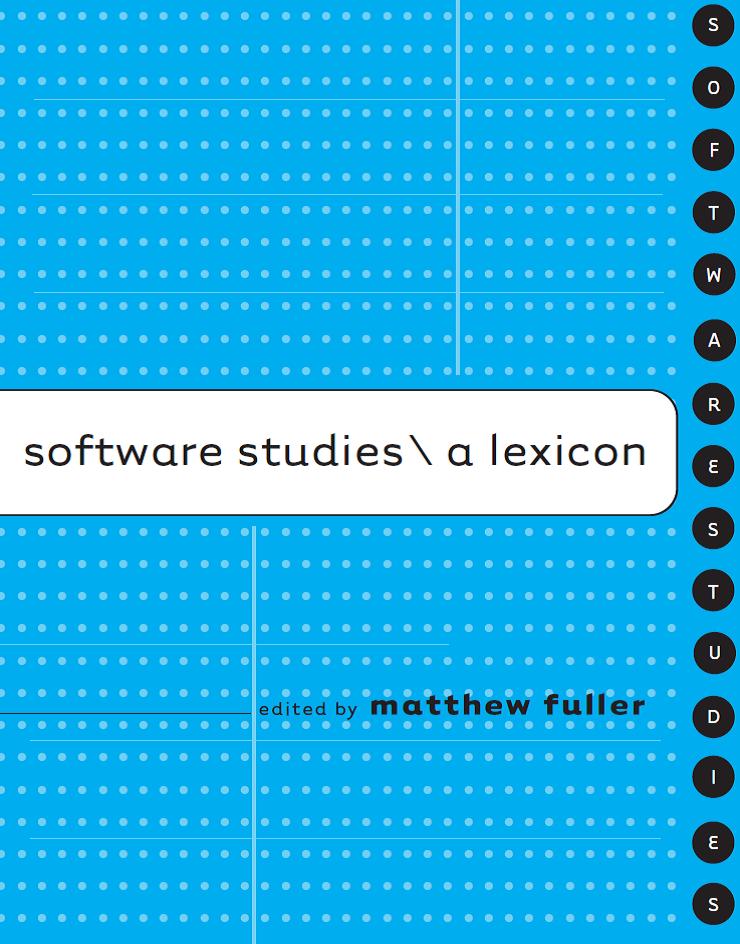 |
Software Studies / a lexicon Matthew Fuller (2008)
Matthew Fullers work Software studies / a lexicon gives, apart from Fullers introduction to the topic, a very broad and multi-facetted approach to the new field of studies which helps to showcase it in all its variety. In the almost 40 texts by various authors topics from computer science, engineering as well as the humanities come together, providing an excellent overview of the variety of approaches possible in software studies.
Fuller, M., 2008. Software Studies / a lexicon, MIT Press.
|
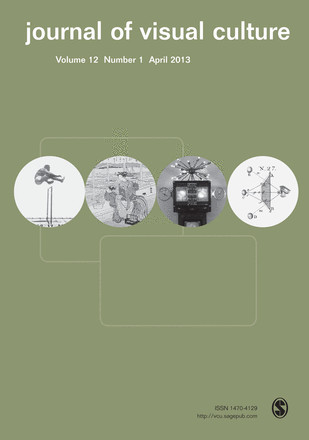 |
Media after Software Lev Manovich (2013)
In this short essay, grouped around the premise There is only software Manovich establishes his thoughts on the centrality of software when interacting with computers. He proposes that as all media nowadays are accessed through software, users do not get around engaging with its properties any longer. This piece can serve as a good entry point to Lev Manovichs writing on software.
Manovich, L., 2013. Media After Software. Journal of Visual Culture, 12(1), pp.3037.
|
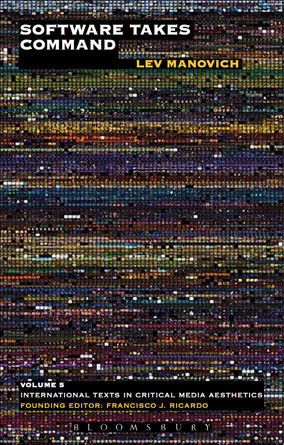 |
Software takes Command Lev Manovich (2013)
In Software takes command Lev Manovich expands on the basis, he has laid with his book The Language of New Media from 2001. Manovich uses Photoshop, Aftereffects and Google Earth as his main case studies in order to explore the historical development of the media, their structural basis and their media design, whose importance for user interaction he elaborates in his last chapter software in action.
Manovich, L., 2013. Software takes Command, Bloomsbury.
|
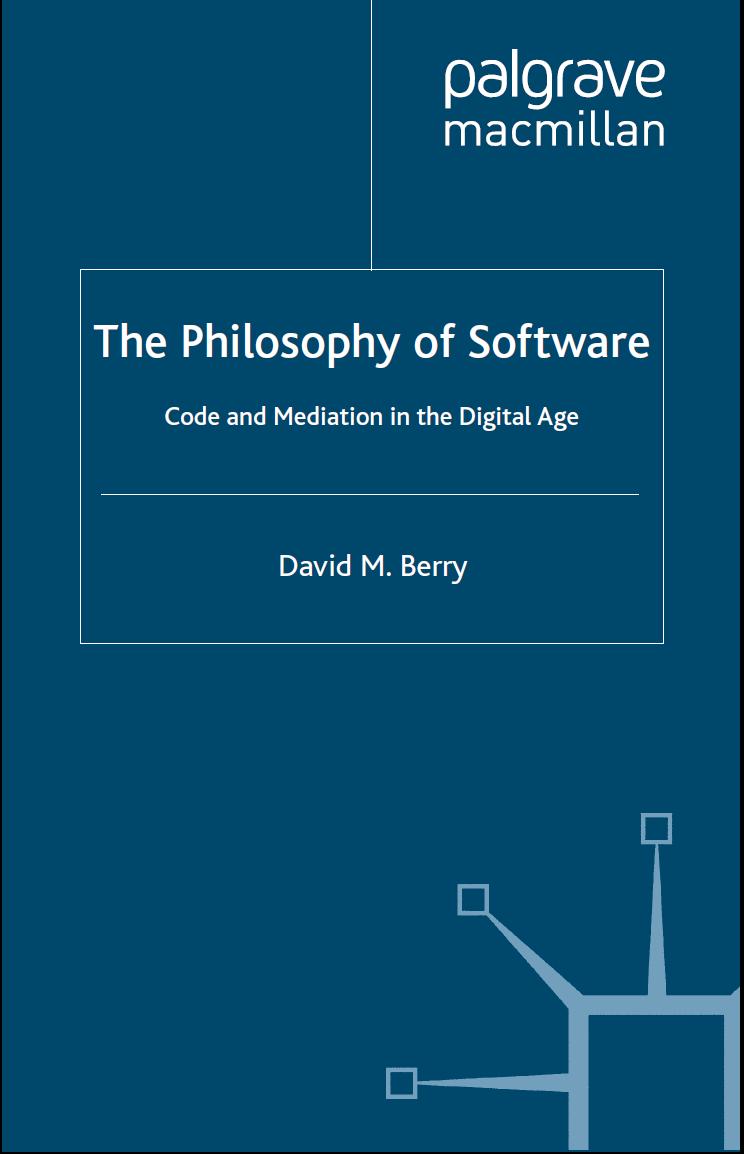 |
The Philosophy of Software David M. Berry (2011)
David M. Berry explorers the new dimension added to the processes of assigning, sorting and sending information when engaging in these activities using software/code. In a philosophical approach to code, the author shows how software permeates our world ontologically, epistemologically as well as aesthetically. Seeing that as Berry puts it all intellectual work is now software study(Berry 6), he sees a consideration of these topics in relation to code as essential.
Berry, D.M.,2011. The Philosophy of Software, Palgrave Macmillan.
|
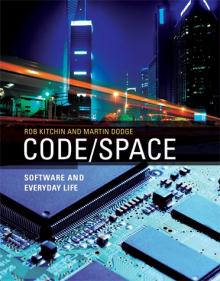 |
Code/Space Software and Everyday Life Rob Kitchin and Martin Dodge (2011)
In their work Code/Space Kitchin and Dodge examine the interrelationship between code and space, insofar as in modern life both categories inform and produce each other. Spaces of investigation range from air-port check-in counters to cafes, where people gather to make use of the wireless connection. On the basis of this research the authors explorer the important influence that software has on the everyday.
Kitchin, D.R. & Dodge, M., 2011. Code/Space: Software and Everyday Life, MIT Press.
|
Sources
Barbrook, Richard, and Andy Cameron. The Californian Ideology. August, 1995. < http://www.alamut.com/subj/ideologies/pessimism/califIdeo_I.html >. Fuller, Matthew. Introduction: The Stuff of Software, in Software Studies: A Lexicon(Cambridge, MA: MIT Press, 2008), pp. 1-14. John, Winsome St, and Patricia Johnson. "The pros and cons of data analysis software forqualitative research." Journal of Nursing Scholarship 32.4 (2000): 393-397. Kitchin, D.R. & Dodge, M., 2011. Code/Space: Software and Everyday Life, MIT Press. Manovich, Lev. Introduction, in Software Takes Command (New York: Bloomsberry,2013), pp. 1-43. Raymond, Eric S. The Cathedral and the Bazaar. First Monday. 1998. < http://www.firstmonday.org/issues/issue3_3/raymond/ > Silver, Christina, and Ann Lewins. Choosing a Caqdas Package. 2009 : 132. Web. 20Sept.2013. < http://www.umass.edu/issr/pdf/resources_CAQDAS.pdf >. Silver, Christina. Choosing the Right Software for your Research Study: an Overviewing of Leading CAQDAS Packages.2009:1-69. Web.20 Sept 2013. <http://www.surrey.ac.uk/sociology/research/researchcentres/caqdas/files/CAQ09CSslides.pdf>. Silver, Christina. Qualitative Software Planning Seminar. Qualitative Innovations in 2012: 1-60. Web. 20 Sept. 2013. <http://www.surrey.ac.uk/sociology/research/researchcentres/caqdas/files/2012_11_9_SWP_CS.pdf>. Software Studies Initiative. Software Studies Initiative. Web. 21 Sept. 1BC. Stallman, Richard. The GNU Operating System and the Free Software Movement. in Chris DiBone, Sam Ockman and Mark Stone, eds. Open Sources: Voices from the Open Source Revolution. Sebastopol: O'Reilly, 1999. pp. 53-70. Williams, Sam. Free As in Freedom: Richard Stallman's Crusade for Free Software. Sebastopol: OReilly Media, 2002. [ Back to top]| I | Attachment | Action | Size | Date | Who | Comment |
|---|---|---|---|---|---|---|
| |
Berry_image.jpg | manage | 49 K | 22 Sep 2013 - 09:00 | MichaelKerssens | |
| |
Fuller_image.jpg | manage | 91 K | 22 Sep 2013 - 09:00 | MichaelKerssens | |
| |
Kitchin_image.jpg | manage | 16 K | 22 Sep 2013 - 09:01 | MichaelKerssens | |
| |
Manovich_Journal_of_Visiual_Culture_image.jpg | manage | 16 K | 22 Sep 2013 - 09:01 | MichaelKerssens | |
| |
Manovich_Softwarecommand_image.jpg | manage | 90 K | 22 Sep 2013 - 09:01 | MichaelKerssens |
- Searching & Collecting
- Journal Guide
- Web & Blog Guide
- Research Communities
- Amsterdam Scene
- Amsterdam New Media Industry
- New Media Events
- New Media Methods
- Visualising Theories
- Key Works
- Academic Writing Guide
- Data Tools
- Data Visualisation
- Web Stats
- Research Apps
- Secondary Social Media
- Privacy
- Collaboration
 Copyright © by the contributing authors. All material on this collaboration platform is the property of the contributing authors.
Copyright © by the contributing authors. All material on this collaboration platform is the property of the contributing authors. Ideas, requests, problems regarding Foswiki? Send feedback


